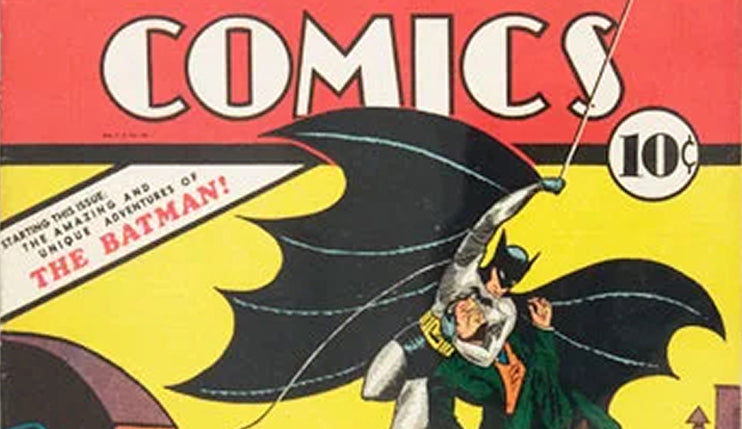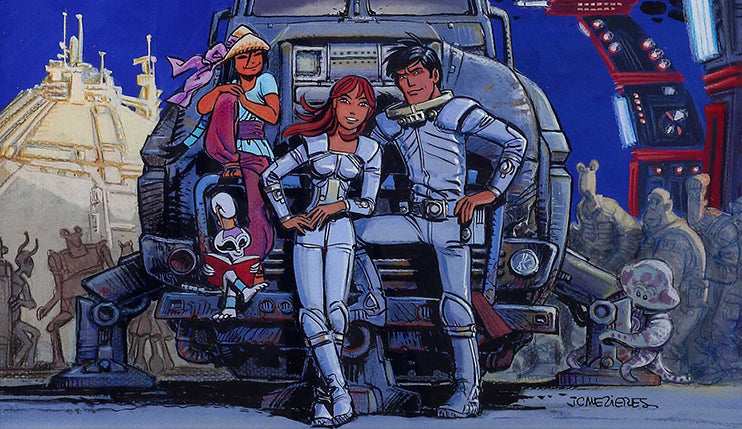An exploration of how American comics shaped global visual storytelling.
While Japan gave us manga and Europe developed the elegant tradition of bande dessinée, the United States forged its own comic legacy—one driven by cape-clad heroes and rebellious indie creators. From the golden myths of Superman to the raw, personal stories found in underground zines, American comics have continually evolved to mirror—and sometimes challenge—the culture that gave rise to them.

Superman #1 by writer Jerry Siegel and artist Joe Shuster
Superheroes: America’s Modern Myths
When Superman leapt onto the scene in 1938, he didn’t just change comics—he helped invent a genre. Alongside Batman and Wonder Woman, these icons emerged during the Great Depression and World War II, offering readers an escape and a sense of moral certainty in turbulent times. They weren’t just characters; they were symbols.
The industry’s two powerhouses, DC Comics and Marvel, built entire universes around these archetypes. Spider-Man, the X-Men, Iron Man—they became part of the cultural fabric, often adapting to reflect contemporary concerns: civil rights, mental health, and more.

DC Versus Marvel Omnibus
American superhero comics have passed through several distinct eras. The Golden Age (1938–1950) introduced clear-cut heroes and patriotism; the Silver Age (1956–1970) leaned into science fiction and moral dilemmas; and the Bronze Age (1970s–mid-1980s) tackled more grounded social issues—drug abuse, racism, and urban decay. Today’s comics embrace greater diversity, nuance, and experimentation than ever before.
Fun fact: The Comics Code Authority, introduced in 1954, imposed strict censorship on U.S. comics. Many creators responded by moving underground, sparking the rise of alternative comics that tackled taboo topics head-on.
Indie Comics & Graphic Novels: Breaking the Mold
Not every comic book has a cape. The American indie scene is proof that comics can tell any story—funny, dark, political, intimate.
In the 1980s, Art Spiegelman’s Maus made history by becoming the first graphic novel to win a Pulitzer Prize. Suddenly, comics weren’t just entertainment—they were literature. Since then, indie voices have flourished. From the genre-blending epic Saga by Brian K. Vaughan and Fiona Staples to Alison Bechdel’s deeply personal Fun Home, indie comics explore identity, trauma, love, and everything in between.

Saga nº 11 by Brian K.Vaughan and Fiona Staples
The format itself also shifted. As single-issue comics waned in the 1990s and 2000s, trade paperbacks and graphic novels rose in popularity, especially in bookstores and libraries. This made it easier for readers to discover complete stories—and for indie creators to thrive outside the traditional publishing system.
Did you know? Raina Telgemeier’s young adult graphic novels like Smile and Sisters routinely outsell superhero titles in the U.S., proving there’s a massive appetite for personal, relatable storytelling.
From Strips to Screens: A Living Legacy
American comics began humbly—with newspaper strips like The Yellow Kid in the late 19th century—but grew into a powerhouse industry. Along the way, they faced censorship, moral panic, and market collapse. But they also gave rise to rebellious underground zines, award-winning graphic novels, and a film industry built on their characters.

The Yellow Kid by Richard Felton Outcault
Today, superheroes dominate global pop culture, while indie creators redefine what comics can be: memoirs, essays, experiments. The spectrum is broad, and the medium is as vital as ever.
In short, American comics are a story of contrast and creativity. On one end, the iconic superhero—a symbol of myth and power. On the other hand, the indie creator—unafraid to explore the raw and real. Together, they show that comics aren’t just for kids or collectors. They’re for anyone with a story to tell.




Leave a comment
This site is protected by hCaptcha and the hCaptcha Privacy Policy and Terms of Service apply.